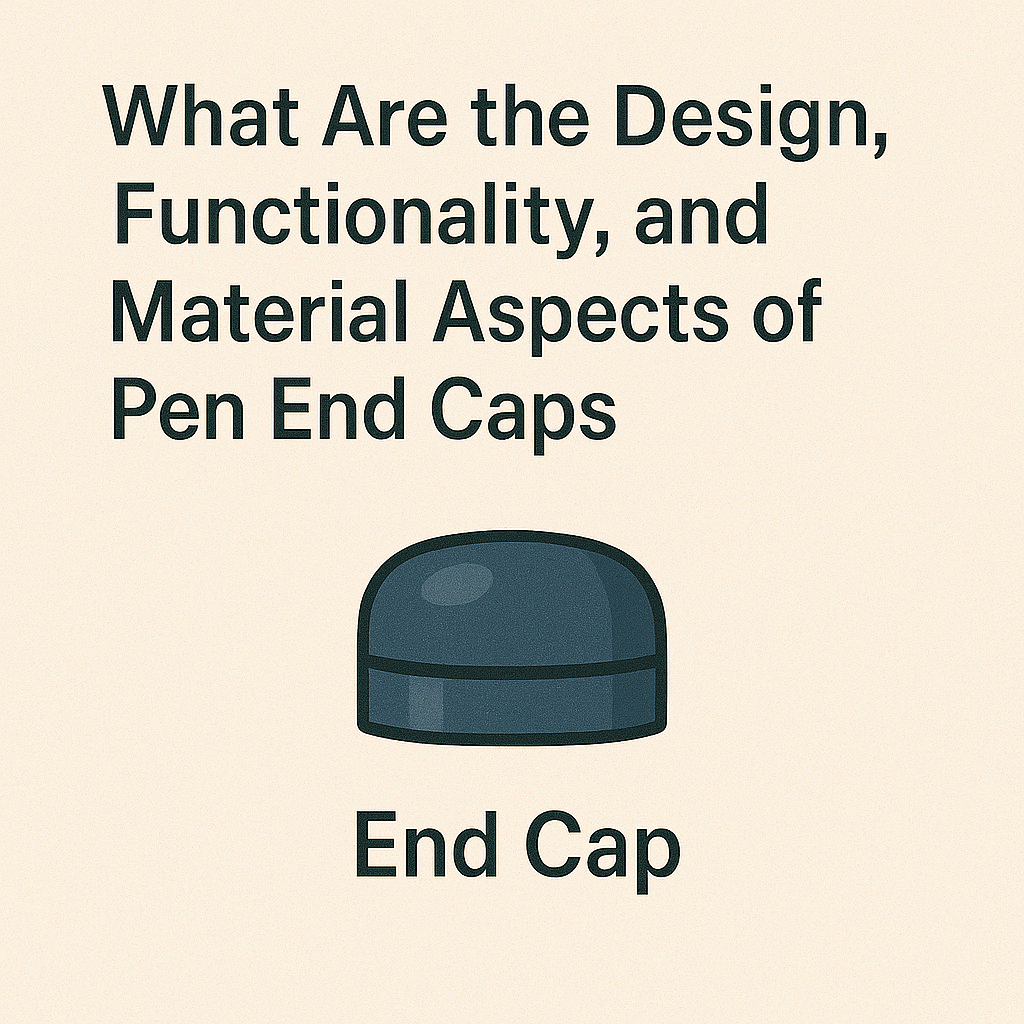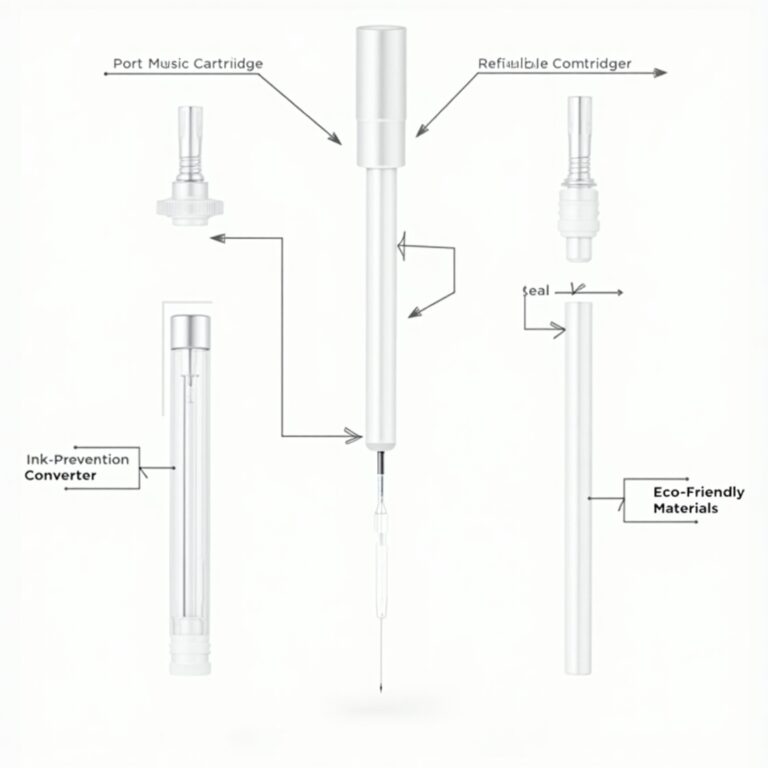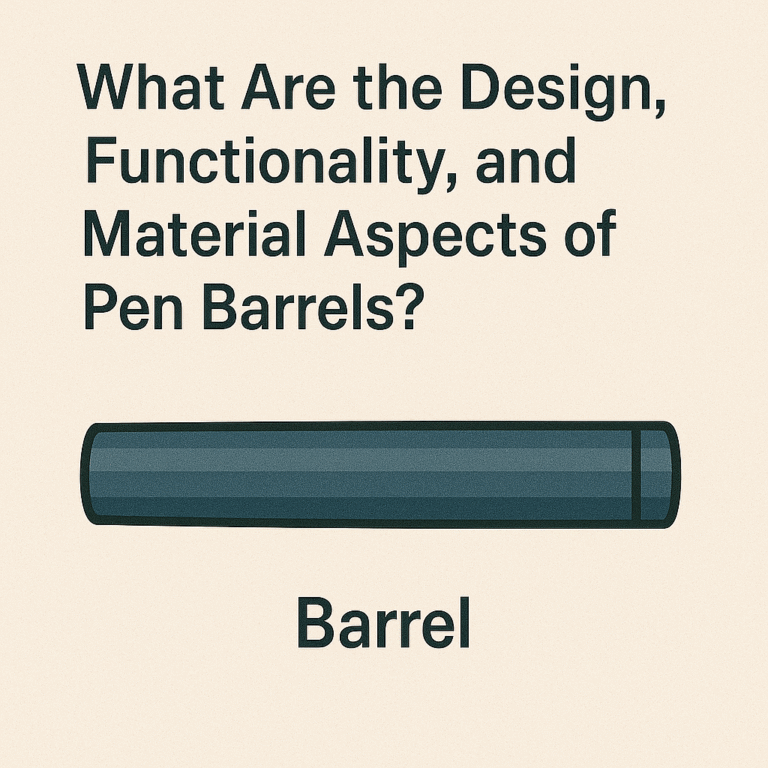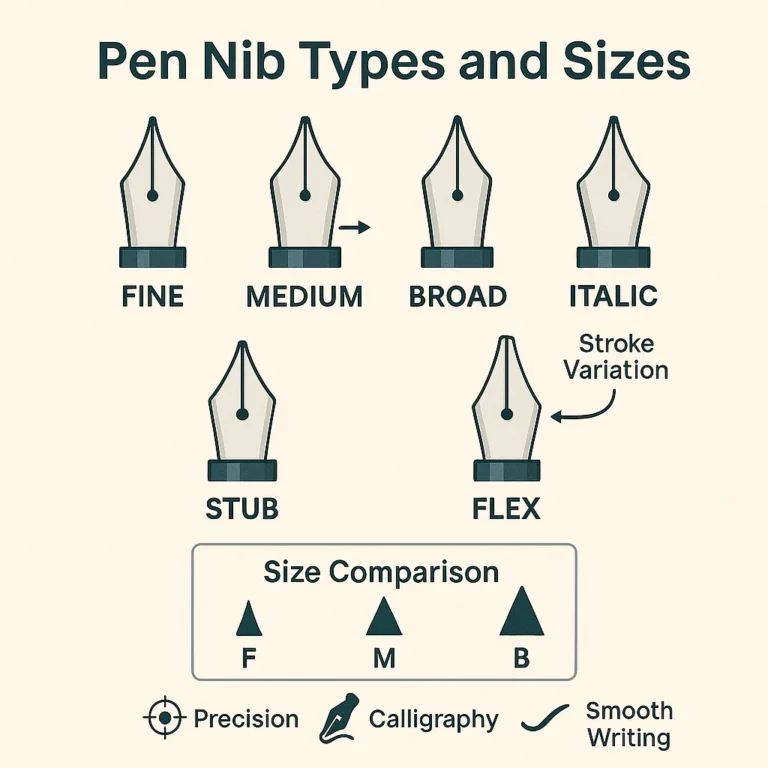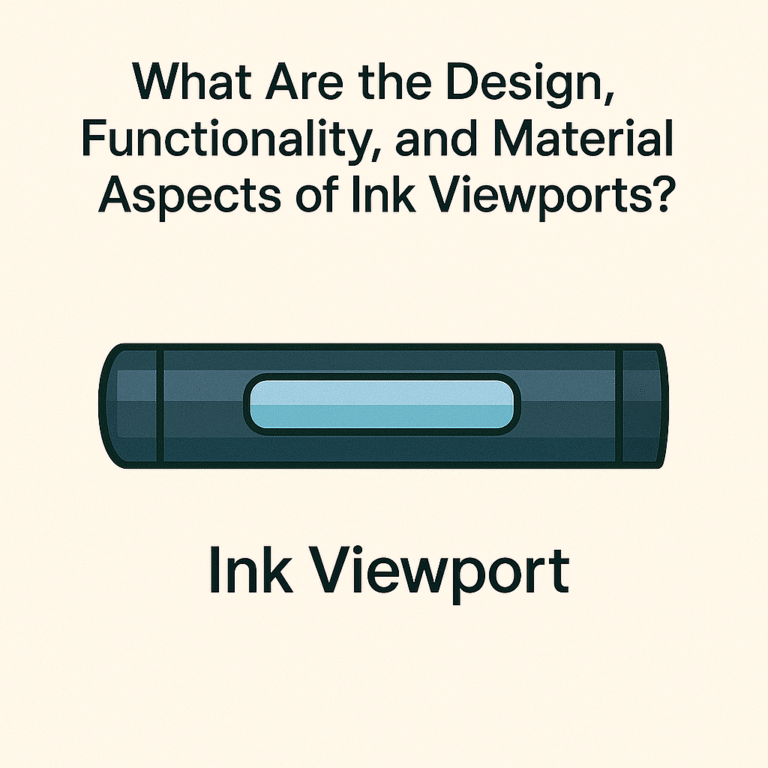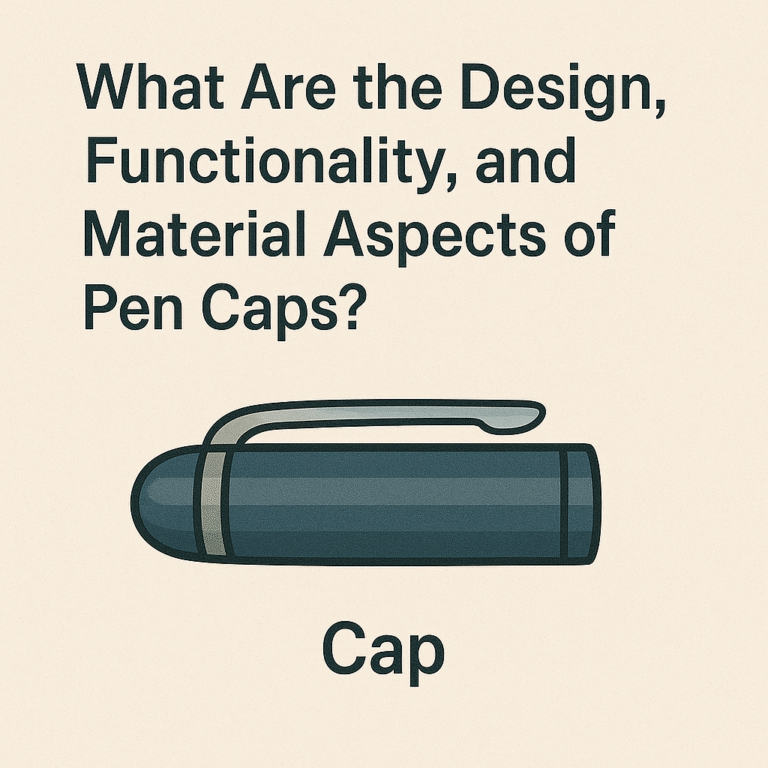What Are Pen Feed Fin: function, Types ,Common Uses and importance?

Pen feed fins are thin, comb-like structures on a fountain pen’s feed that regulate ink and air flow between the reservoir and nib. Their function is critical for maintaining consistent ink delivery and preventing blotting or skipping during writing. Feed fins come in different designs to suit various nib types and ink flow requirements. Understanding their role helps explain why they are essential to fountain pen performance.
Key Takeaways
- Pen feeds use gravity and capillary action to send ink from the reservoir to the nib, stopping leaks or blobs.
- Feeds come in two types: plastic for durability in modern pens, and ebonite for better ink control in vintage or calligraphy pens.
- Regular cleaning with water keeps pen feeds clear of clogs. Avoid mixing different inks to prevent blockages.
- Pen feeds match various nib types, making writing smooth for both artists and writers.
- Clean feeds ensure steady, reliable ink flow during writing.

What is a Pen Feed Fin?

A Pen Feed Fin is crucial in fountain pens. It attaches to the pen nib and transports ink from the reservoir to the writing tip through thin channels using capillary action, similar to water climbing up a tiny tube.
There are mainly two types: plastic feeds and ebonite feeds. Plastic feeds are common in newer pens, known for their durability and efficiency in regular use. On the other hand, ebonite feeds, made from vulcanized rubber, provide finer control over ink flow.
This feature is beneficial for artists or writers seeking precision in their work. Both kinds ensure a smooth writing experience without interrupting ink delivery or causing blots on paper.
How Does a Pen Feed Work?
The pen feed uses gravity and capillary action to deliver ink from the reservoir to the nib, ensuring smooth writing and consistent ink flow.
Gravity and Capillary Action
Fountain pens use gravity and capillary action to send ink from the reservoir to the nib. Gravity draws ink down, and capillary action moves it through small spaces in the pen feed, ensuring smooth ink flow during writing.
Capillary action, similar to how water climbs up plant roots, pulls ink through narrow channels in the feed fin straight to the tip for consistent writing without leaking or interruption.
Role of Fins in Ink Regulation
Pen feeds have fins. These fins guide ink from the reservoir to the nib using capillary action. They also manage air flow back into the chamber to prevent leaks or dryness.
Capillary action and air control are essential for steady, smooth writing.
Both plastic and ebonite feeds feature these fins. They suit various pens, such as fountain pens and calligraphy instruments, including ones with broad or flex nibs. Ebonite allows more custom control of ink flow; however, plastic is more widespread in today’s pens.
Types of Pen Feed Fins
Plastic and ebonite are the main materials for fountain pen feeds, each offering different writing experiences.
Plastic Feeds
Fountain pens have plastic feeds that guide ink from the reservoir to the nib. These parts are cheap and easy to make, which is why they’re common in today’s pens. Compared to hard rubber or ebonite, plastic does a good job with different ink types and prevents leaks.
Manufacturers prefer plastic because it can take on very detailed shapes. This detail is crucial for designing the channels that use capillary action to move ink. Plastic feeds fit well with many nib sizes, from fine points for everyday writing to broad nibs used in calligraphy.
People who enjoy using fountain pens, whether they are beginners or advanced users, rely on these components for a smooth writing experience.
Ebonite Feeds
Ebonite feeds, formed from robust rubber, are vital in antique fountain pens for managing the ink flow towards the nib. They pair effectively with diverse ink types and outdo plastic feeds since they can modify to improve ink flow.
This modification is significantly important for calligraphy or art pens, providing adjustable ink supply according to pressure and speed.
Popular styles such as the Pilot Custom 823 and Parker Vacumatic feature ebonite feeds for a flawless writing encounter. These feeds work well with dense inks like iron gall, preventing blockages.
Regular cleaning of these parts is required to keep their efficiency and ensure consistent operation.
Common Uses of Pen Feed Fins
Pen feed fins ensure smooth ink flow for easy writing. They support different nib styles, aiding artists and enthusiasts.
Consistent Ink Flow for Writing
The pen feed fin ensures smooth ink flow in fountain pens. It uses capillary action to move ink from the reservoir to the nib, acting like a bridge. This steady stream of ink helps produce clear words without breaks or blobs.
Different nibs such as broad, italic, or flex require precise ink flow for optimal performance. Plastic and ebonite feeds fit various pens, supporting artists and writers for perfect results on paper.
Specialty Uses for Calligraphy and Art
Pen feed fins are crucial for both writing and art, ensuring smooth ink flow without interruptions or blobs. They help calligraphers achieve precise lettering with different nibs like italic and flex nibs needing specific feeds for better control.
For artists, consistent ink flow is key to drawing fine lines and detailed designs. Ebonite or plastic feeds match various artistic needs, letting artists use diverse inks such as iron gall inks safely.
This versatility allows more choices in colors and effects for their creations.
Compatibility with Different Nib Types
Choosing the right pen is crucial for calligraphy and art. Different nib types, such as broad, italic, stub, and flex nibs, require suitable feed fins to ensure smooth ink flow. Steel nibs are hard while gold nibs are soft and flexible.
This difference means adjusting ink flow is necessary depending on the type of nib.
Plastic feeds are widely used in many pens because they perform well across a range of writing instruments. For enthusiasts seeking greater control over their ink flow, ebonite feeds are an excellent choice.
These feeds complement flexible nibs and vintage fountain pens like the Pilot Custom 823 or Parker Vacumatic effectively.
The compatibility between cartridge pens or dip pens with their respective feed fin setups is essential for achieving consistent, skip-free writing and beautiful lettering outcomes on paper.
Importance of Feed Maintenance
Cleaning your fountain pen feed is essential for smooth writing and preventing ink clogs. This step ensures your pen performs well for any writing task.
Cleaning and Care Tips
Taking care of your fountain pen helps it last longer and write better. Regularly cleaning the pen prevents ink blockages in the feed.
- Wash the nib and feed under cool water every few weeks to remove dried ink.
- After washing, gently dry the nib and feed with a soft cloth.
- If the nib unit is clogged, soak it in plain water overnight, then rinse.
- Use a bulb syringe or converter to clean out the ink reservoir, getting rid of old ink and debris.
- Only take apart the pen for a deep clean if it’s safe according to the maker’s instructions.
- Scrub cartridges and converters inside with water using a small brush.
- Make sure all parts are dry before putting the pen back together to stop rust or corrosion.
- Stay away from tap water with lots of minerals; it can leave deposits inside your pen.
Avoiding ink blockages is key for keeping your fountain pen in good shape.
Avoiding Ink Blockages
Keep your fountain pen clear of clogs for smooth writing.
- Always use new fountain pen ink to avoid drying and clogging.
- Clean the feed with water every couple of weeks if you write often.
- For less-used pens, clean them well before putting them away to stop ink from hardening.
- Try not to switch inks too much; different inks can clump together.
- Pick high-quality ink that flows easily and doesn’t leave residue behind.
- Clean your pen more when using carbon or pigmented inks since they can cause clogs.
- A soft brush or bulb syringe can gently clear debris from the feed fins.
- Keep pens nib up when not used to keep ink from blocking the feed.
- Check for leaks near the nib and feed area. Cracks can mess up ink flow and create clogs.
- Use a pen flush solution now and then for thorough cleaning, especially when changing ink colors.
These actions will keep your fountain pen’s ink flowing smoothly, for consistent, reliable writing.
Conclusion
Pen feed fins ensure smooth writing by moving ink from the reservoir to the nib through gravity and capillary action. They come in two main types: plastic and ebonite, each suitable for different pens like calligraphy ones or those with varied nib styles.
To prevent ink blockages, it’s key to clean these parts regularly. This keeps them working efficiently.
Pen feed fins are crucial for steady ink flow and compatibility with various nibs, aiding both artists and writers in their work. Proper care helps maintain their performance over time.
FAQs
1. What is a fountain pen feed and what does it do?
A fountain pen feed, often made of hard rubber or plastic like in the Lamy Safari, controls the ink flow from the ink reservoir to the nib. It uses capillary action to ensure consistent writing.
2. How many types of feeds are there in fountain pens?
There are mainly two types: ebonite feed and plastic feed. Ebonite feeds, found in vintage fountain pens such as Parker Vacumatic and Sheaffer Snorkel, are made from hard rubber while plastic feeds are common in modern pens.
3. How does a pen nib impact my writing style?
Pen nibs come in various shapes like italic nib, stub nib, flex nib or broad nib which can help you achieve different styles – from calligraphy with pointed nibs to everyday writing with ballpoints.
4. Which materials make durable and high-quality pen feeds?
Materials like stainless steel for the nib or gold for premium options offer durability. For instance, Pilot Custom 823 boasts a gold nib that resists corrosion better than others.
5. Can I control how much ink flows out of my fountain pen?
Yes! The breather hole on your fountain pen’s feed fin regulates this aspect by controlling air intake into the ink reservoir–more air means more ink flow!
6. Why would someone prefer an eyedropper fountain pen over others?
An eyedropper fountain pen holds more ink than typical cartridge-based models like Kaweco or those using pumps like Parker Jointless – perfect if you write lots!
